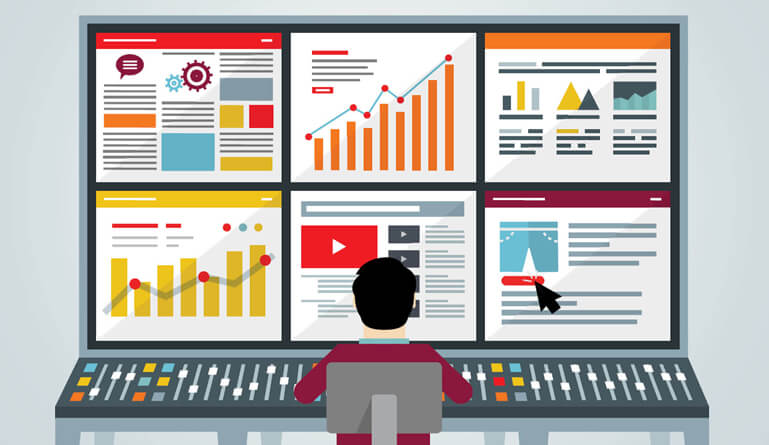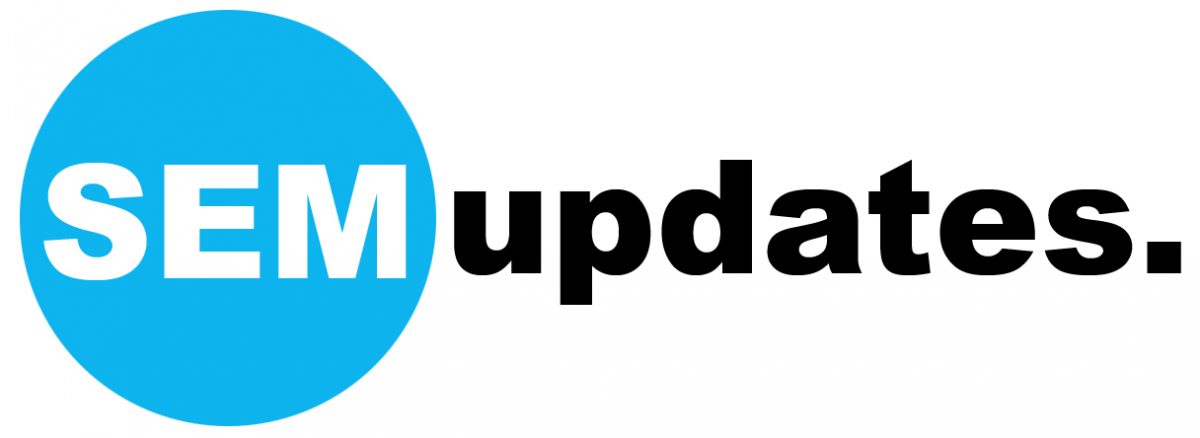Programmatic advertising is a new and cooler way to handle your ad campaigns. In this article, you will learn to implement programmatic advertising to grow your business.
Data is the Lifeline of Digital marketing. A digital marketer can use data collected from users to unlock billions of dollars in merchandise. Programmatic advertising is a new buzzword that has been around since 2014 but has increasingly become popular in a digital marketing trend this 2021.
Are you an Advertisement buyer or seller? Do you know that you can have more conversions with advertisement campaigns that are data-driven? Well, this is what programmatic advertising is all about.
In this article, we would be looking at how to buy and sell programmatic ads, the types, importance, and guide on how to start programmatic advertisements. Without much mouthing, let us delve in.

Source: Geospatial World
What is Programmatic Advertisement in the First Place?
As the name implies, programmatic advertising involves using programmed algorithms to target specific audiences and increase conversion. With Programmatic advertising, artificial intelligence is employed to automate ad buying and selling.
This advertisement approach is better than the conventional advertisement strategies that are commonplace with digital marketers. The reason for this aforementioned claim is that with Programmatic, one can perform real-time ad bidding, get higher conversions and lower spend in acquiring customers.
This year marks a new Digital Trend that marketing is poised about. Programmatic allows advertisers to fully automate the buying and selling of funnels in an advertisement space.
Programmatic Advertisement is managed by ad exchanges that use computerized auctions to bring both buyer and seller parties together. We are talking about advertisers who want to buy ad space and publishers with online platforms for selling ads.
With the aid of programmatic Advertisement, the whole process goes next-gen as algorithmic software manages the sale and ad impressions placement through ad exchange platforms.
Programmatic Advertisement utilizes data garnered from traffic and online targeting methods to serve accurate impressions through the best marketing funnels. This implies that advertisers and publishers would enjoy a good ROI (Return of Investment).
A Dip Into How programmatic Ad Buying Works
- Let us take a look at programmatic buying flow in a nutshell:
- A user clicks on a website.
- The site owner puts up an advert impression for auction using an SSP( Supply-side platform- software used for selling adverts in an automated way).
- The advertiser now offers up bids for the ad impression using a DSP (Demand-side Platform – an inventory used to manage multiple ad exchange accounts).
- The highest ad bidder wins the advertisement impression.
- The ads are served on the online platform of the ad seller to the user.
- Hopefully, the user clicks on the ad, and there is a marketing conversion.
Despite the multiple steps involved in programmatic advertising, the entire ad buying and selling happens in just seconds.
Moreover, the competition for the ad bids is calculated by algorithms so that the most cost-effective bid would be determined.
For instance, if the website visitor that clicked on the ad has a strong potential to engage with the ad, based on the data gotten from web browsing history, the ad bid that would be served would be higher.
Deploying Supply-side Platforms in Programmatic Advertising
In Programmatic advertising transactions, SSPs play a huge role. Supply-side platforms connect to ad exchanges, ad networks, DSPs, and data management platforms. With these connections, publishers can manage the complexity of the programmatic ad-buying and selling process.
There are a couple of processes that supply-side platforms handle, and some of them include:
- Real-time Bidding Transactions
- Ad-network optimization
- Relevancy and
- Frequency capping
Let us now do a brief overview of some of the processes and requirements handled by SSPs.
#1. Real-Time Bidding Transactions – supply-side platforms can sell a publisher’s inventory in an automated way using ad exchange networks.
#2. Ad-Network Optimization – The generic trademark of SSPs is to sell individual ad impressions, and in so doing, they gift ad publishers more control over their inventory. With ad network optimization, publishers can know who is paying for their inventory and thus optimize their adverts accordingly.
#3. Frequency Capping – Demand-Side platforms and Supply-side platforms work pretty much with the same frequency capping.
Frequency capping in this context entails recording the number of times a website visitor is shown a particular ad and then limiting the amount of time the ad is shown to the individual.
#4. Relevancy – with the supply side platform, an ad publisher can ensure that only relevant ads are put into consideration.
Get FREE Digital Marketing Courses and Tutorials Here!
What are the features of a Supply-side Platform?
Let us take a dip into the components and features of SSPs in the realm of programmatic advertising.
Components and features of a Supply-side Platform
#1 Backend and Infrastructure – The SSP employs this feature to carry out technical processes to sell ad spaces.
#2 Ad Exchange- most SSPs around incorporate ad exchange networks’ functionalities, allowing publishers to connect directly to advertisers without the need for a connection to external ad exchanges.
#3 Integrations- Supply Side Platforms can integrate with other digital marketing platforms and facilitate inventory and maximize profits.
#4 Trackers– This SSP functionality helps collect data about the publisher’s website and target a specific audience.
#5. A Reporting Database- Every Supply-side Platform has a reporting database. This functionality helps the SSP receive data from the tracker, thus giving ad publishers excellent transparency about campaign performance.
The functionality of these supply-side platforms has expanded over the years. In the past, ad publishers usually assign ads to ad spaces. However, because of large audiences on the rise, there is stiff competition for ad spaces. Thus, manual ad spaces would no longer be efficient.
Deploying Demand Side Platforms in Programmatic Advertising
A demand-side platform allows advertisers to buy ad impressions on publishers’ websites made available through ad exchange networks.
DSPs allow advertisers to specifically target audiences through data such as age, previous online behaviour, location, etc.
In the context of programmatic advertising, an advertiser enters a bid for ad space through the DSP. The Demand-side Platform allocates impressions based upon the bid price and audience preference of the advertiser.
Types Of Programmatic Advertising
In contrast to the conventional media buying process, programmatic advertising does not always involve publishers and advertisers working on a one-on-one basis to serve ads to web visitors.
The advertisement type and format depends on the type of programmatic deal of choice.
Let us look at some types of Programmatic advertising types
#1. Real-Time Bidding (RTB)
The Real-Time Bidding Ad type is an open auction marketplace for ad buyers and sellers. Because of the increasing popularity of Real-time bidding, it has become synonymous with Programmatic advertising.
In RTB, ad slots are open to anyone via an open auction bidding style. Here, advertisers can choose ad slots made available, and the highest bidder earns an ad slot. It would be noteworthy to say that this happens algorithmically in a matter of seconds.
Real-Time Bidding in Programmatic Advertisement is easy to set up and optimize. The only con of this programmatic advertisement type is that it lacks transparency from the advertisers’ viewpoint. This downside implies that advertisers know the general category where their ads are placed but do not know the exact publisher website.
#2. Private Marketplace
The Private Marketplace programmatic ad type has similar features as the Real-time bidding( RTB). The significant difference here is that this Programmatic platform is only available on an “only invite basis.” Here, private or closed auction publishers put aside a premium ad inventory reserved only for a select few advertisers.
Based on publishers’ huge benefits, Private Marketplaces are used by websites that have a wide readership. In contrast to the common RTB programmatic type, advertisers know the websites where their ads are placed. This way, they can quickly check if they have an accurate ROI (Return of Investment).
#3. Preferred Deals
In this type of programmatic advertising, advertisers usually choose the ad inventory at a fixed rate. This is done before the deal is made available to the private Marketplace with an open auction following suite.
Preferred deals in the context of programmatic advertising can also be referred to as “spot buying.” The approach here involves both marketing parties agreeing on targeting, pricing, etc., beforehand.
#4.Programmatic guaranteed
This programmatic ad type is also known as automated guaranteed or programmatic direct. Programmatic guaranteed follows the traditional approach of media buying. In this scenario, the ad buyer and seller negotiate the terms on a one-on-one basis.
Top 2 Channels Used For Displaying Programmatic Advertising
In subsequent paragraphs, we would be looking at the top 2channels that are used for programmatic advertising.
#1. Display Ads
This term is used to describe any media that is used for online visual ads. In light of programmatic advertising, ads placed on the footer, header, or sidebar are generally considered to display ads.
Publishers and Advertisers work with ad networks like Microsoft, Facebook audience Network, or Google to facilitate ad slot buying and selling. Here, publishers make money from impressions and click data that is garnered from the display network.
#2. Video Ads
One of the most preferred mediums for doing ads is video ads. There are three main types of video advertisement deployed in a programmatic ad; In-stream ads, in-display ads, and out-stream ads.
Let us briefly review each of these ad types:
- In-stream ads- these are media that appear in the online video player. For instance, any video that runs before you stream a youtube video is called an in-stream ad in the context of in-stream ads, pre-roll, mid-roll, Post-roll.
- In-display ads – are adverts that are not displayed in the video player but video search results or video recommendations.
- Out-stream Ads- These are ads that appear between online text-based content. This programmatic ad type shows up between articles or as pop-under or pop-up ads.




